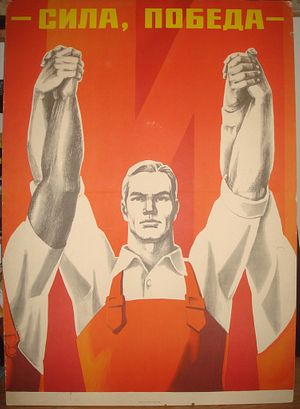One of the legacies of the Soviet Union in Central Asia is the emphasis by the powers-that-be on a narrative of national unity and ethnic harmony. These are wonderful ideals, but the drumbeat of optimism often obscures the reality of tensions that can and do exist in society. Such a narrative also neglects the history of Central Asia’s multiethnic makeup. The Soviet Union was not some multiethnic utopia, though the propaganda posters certainly said it was.
A November 3, 1959 National Security Council briefing — titled Soviet Nationalities Program — by the U.S. Central Intelligence Agency, classified as “secret” at the time and declassified in 2002 (and made available online this past December), starts like this: “The Soviet regimes is having more trouble with its minority nationalities (Kazakhs, Uzbeks, Turkmens, etc.) now than any time since immediately after World War II.”
“For ideological reasons,” the briefing goes on to say, “Moscow continues to claim that it has no real nationality problem with the 70-odd nationalities among its population…” Pointing to a contemporary Pravda article, the briefing contrasts the strident tone of Soviet leaders and propaganda regarding having solved the “nationalities question” and simultaneous purges of leadership at the local level to root out problems with nationalities and nationalism.
Soviet reality — as described by Moscow — existed separate from demonstrative reality in the Soviet Union’s Central Asian republics.
The briefing catalogues local party firings in Turkmenistan and Uzbekistan. The “Republic party boss and another member of the five-man Party secretariat lost their jobs for officially encouraging Turkmen nationalism and promoting natives at the expense of local Russian cadres.” In Uzbekistan, the party chief and the premier were fired for promoting “politically unqualified toadies on the basis of friendly relations.” But beyond local favoritism, a “Western Communist correspondent in Moscow” described the situation thusly: “Some of the local boys got together and conspired to keep the Russians out.”
The increased tensions at the time were ultimately linked to Khrushchev’s de-Stalinization efforts. In Central Asia, in particular, the tensions were linked to the “new lands” program in which thousands of Russians migrated to Kazakhstan, pushing the ethnic Kazakh population below 50 percent in the republic. Economic reorganizations in 1957 also “opened the door for the minorities to put their interests ahead of Moscow’s.”
But the CIA briefing (in one of the best “well, actually” moments I’ve seen in official documents), nevertheless notes:
Actually, the problem of nationalism has always plagued the USSR… Stalin relied on purges and deportations to keep the minorities quiet; Khrushchev has tried to be more subtle.
Modern Central Asian states often gloss over the tribulations of the Soviet period. Separatism is a serious charge, and inciting “social, national, generic, racial, class, or religious hatred” is a crime for which people have been jailed. Like the Soviet Union, modern Central Asian states are ill at ease with confronting ethnic tension and opt, instead, for an idealistic take on history.
For example, the write-up of a 2014 speech given by Kazakh President Nursultan Nazarbayev about his 2050 strategy includes this passage:
Kazakhstan’s multi-ethnic society has a long history: during Soviet times, representatives of various nationalities, including Russians, Ukrainians, Germans, Turkish, and Koreans, under different circumstances moved to Kazakhstan. In his speech, President Nazarbayev focused on Kazakhstan’s path toward its multinational society: from the past when different nationalities were initially united under the pressures of World War II and later while implementing the grandiose plans of the Soviet economy. At present, Kazakhstan’s people not only strengthen inter-ethnic dialogue, but also learn how to benefit from the richness of the country’s vast variety of national customs, literature and traditions. (emphasis mine)
The bolded sections are a way to get around the fact that Kazakhstan’s multiethnic makeup was the project of forced deportations and stems from the hosting of Soviet labor camps. Kazakhstan and Uzbekistan host a vibrant Korean minority, for example, but only because Stalin deported every Korean living in the Soviet Union’s Far East in 1937, fearing Japanese spies among them. Over the course of several decades, the situation of the Koreans improved — labor camps with armed guards evolved into collective farms without. But by glossing over the real history, Kazakhstan handicaps itself in celebrating actual progress.
The CIA briefing concludes that minority nationalities in the Soviet Union were “being subjected to a neutralization campaign unprecedented since the time of Stalin…” The tensions or their causes never went away, either. A 1988 article in the New York Times previewing a meeting of the Communist Party Central Committee to be held by Soviet leader Mikhail Gorbachev “to deal with the bedeviling discontents of ethnic minorities” noted that “The top leadership in this country of more than 100 non-Russian minorities resembles a Slavic brotherhood.”

































